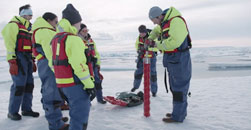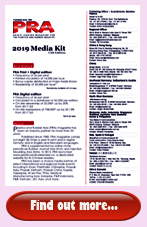PRA Chinese
Rubber Journal Asia Injection Moulding Asia Energy, Oil & Gas Asia
VISIT OUR OTHER SITES:
PRA Chinese
Rubber Journal Asia
Injection Moulding Asia
Energy, Oil & Gas Asia
Plastics pollution extends to the Arctic; marine life in danger

Just how big is plastics pollution?? As big as the Arctic Ocean, according to a research team led by the University of Rhode Island Graduate School of Oceanography (GSO), which has discovered microplastics visible to the naked eye and that may affect marine life even in the remotest parts of the planet.
According to GSO professor Brice Loose, the expedition’s chief scientist, the team found a disturbing amount of plastic – different types, sizes and colours – in ice cores.
Since 2014, it has been known that plastic has been appearing in sea ice in the Central Arctic, Beaufort Gyre and the Eurasian Basin. However, this is the first time the presence of plastics has been discovered in ice – both multi-year and first-year ice – from the Northwest Passage.
“At the micro scale, where we used to just see plankton and zooplankton, we found quite a bit of plastic in the sea ice,” said Loose.

The team is travelling as part of the National Science Foundation funded Northwest Passage Project (NPP) to investigate the Canadian Arctic Archipelago. The team of natural and social scientists, supported by 25 post-secondary students from the US and Canada, were collecting water, ice and air samples as part of the NPP to better understand the impact of climate change on the Arctic environment and biological diversity in the Passage. Over the next few months, the scientists will be analysing the samples and data collected at sea.
Building on the research of colleagues who had been looking at the existence of plastics in the Central Arctic, the NPP team collected plastic from ice floes that were up to about 8 ft in thickness. Some of the sea ice collected is believed to have started out in the Central Arctic, moving east through the Nares Strait by Greenland, and then making its way into the Passage’s Lancaster Sound last year.
Sea ice, says Loose, acts as a concentrator of everything that is in the water, as a result of the continual flushing of sea water through the ice, even after its formation. Through this process, the ice tends to build up and concentrate nutrients, algae as well as microplastics.
“We thought we would need quite a bit of ice to find the plastics. So we started with an entire core of ice in order to concentrate it down to see how much plastic it contained,” said Loose. “As it turned out, there was so much plastic that you could look at it with your naked eye and see all of the beads, fibres and filaments just sitting there in the bottom of the containers.”
The collected samples reinforce the observation that ice concentrates microplastics, which are found in a much greater abundance than in an equivalent volume of seawater. This may impact the structure of the ice and its absorption of solar radiation as well as the interaction of plastic particles with microorganisms, phytoplankton and zooplankton. While these potential relationships have not yet been established for sea ice covered regions, the sheer quantities of microplastics found does underscore how man made waste is impacting the environment – even in more remote, sheltered locations such as the Arctic.
“We don’t know yet what the chemical composition of the plastics is,” said Loose. “But, even knowing what we knew about the occurrence of plastics across the globe – for us, it was kind of a punch to the stomach to see what looked like a normal sea ice core taken in such a beautiful, pristine environment just chocked full of this material that is so completely foreign.”
The shock of finding microplastics in ice, comes after an earlier find of a plastic bag by a diver in the Pacific Ocean’s Marianas Trench, the deepest place on Earth, adding further depth to how wide plastics pollution has reached.
(PRA)
Subscribe to Get the Latest Updates from PRA Please click here
©2018 Plastics and Rubber Asia. All rights reserved.

©2018 Plastics and Rubber Asia. All rights reserved.
Home Terms & Conditions Privacy Policy Webmail Site Map About Us





















